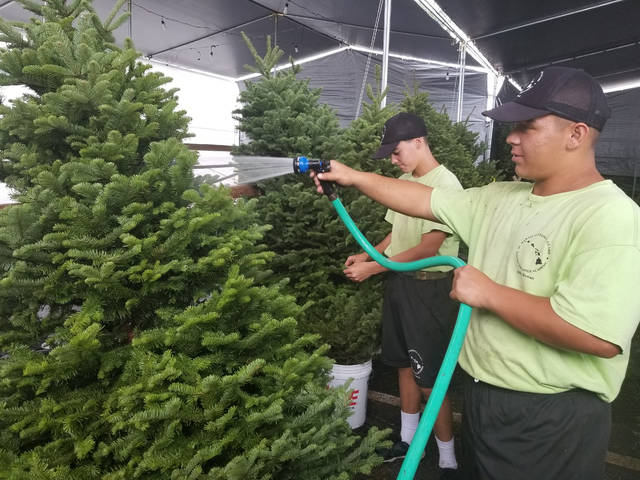The background of the Christmas tree farming industry in the United States dates back to the year 1851, when a business farmer named Mark Carr carried two sleds full of evergreen trees into New York City to market them. As the story goes, he sold all the trees, as well as thus a brand-new industry was born. In 1901, Christmas tree farming started on a bigger range when a farmer in New Jersey grew 25,000 Norway spruce trees. He gathered and marketed them simply 7 years later on for $1.00 per tree.
The Christmas tree farming industry experienced slow-moving growth during the initial fifty percent of the 20th century. In 1940, it was approximated that some 90% of all Christmas trees were still coming from woodlands. It was a family custom to select, reduce, and also drag the family history house yearly for design and display screen. Many family members might not imagine the idea of somebody else choosing their Christmas tree for them.
After World War II, Christmas tree farming happened thought about an extra part of farming. As an example, if a farmer had some harsh land that wasn’t good for expanding any other crops, they may plant evergreen trees on it rather. Since the harvest happens in winter, Christmas tree plants were an excellent way for a farmer to round out the year’s organization and also inject some added money into their financial resources at the end of the year.

Throughout the 1960’s, the sector saw part-time Christmas tree farming decrease, while more permanent farming procedures sprang up. The main areas where this service started to thrive remained in the Pacific Northwest, North Carolina, and the upper Midwest, specifically Michigan.
The market for real-time Xmas trees remained to expand until the 1980’s, when an excess circumstance sent rates into a down spiral. Trees that when sold for $18.00 to $30.00 each started selling for just $5.00 each in the early 1990’s. This drove numerous tree farmers out of the marketplace. Buy good singapore christmas trees in this link.
Additionally during the 1990’s, using genuine trees saw a decline, as lots of families started to choose artificial trees over online trees. There were numerous factors for this change. For some, the concept of spending cash on a tree just once was extra attractive than a continued expense every year. For others, ease was an element. Many family members additionally chose artificial trees for security reasons, since real-time trees shed even more conveniently. There was additionally the idea that the cutting of Xmas trees is contributing to deforestation.
In the last years, live tree purchases have actually been back on the rise. Even more individuals comprehend that live Xmas trees come from handled farms rather than woodlands. Likewise, we have much better expertise today that live trees are actually just a fire danger when they aren’t watered properly. With the development of automated Christmas tree waterers, individuals don’t need to bear in mind to water their trees every day any longer.
Xmas trees were added to the UNITED STATE agricultural census in 1997. According to the 2002 demographics taken by the USDA, almost 22,000 U.S. ranches expand evergreen trees for the function of reducing for Xmas tree sales. In that demographics, the leading three states for Xmas tree production were Oregon, North Carolina, and Michigan, specifically.
It is difficult to figure out where this market will certainly enter the future. Today people are more knowledgeable that live Christmas trees do not lead to environmental deficiency since tree manufacturing is strictly a “farming organization.” For the most part, the choice to acquire a real-time versus a fabricated Christmas tree is a personal choice, generally handed down from generation to generation.


